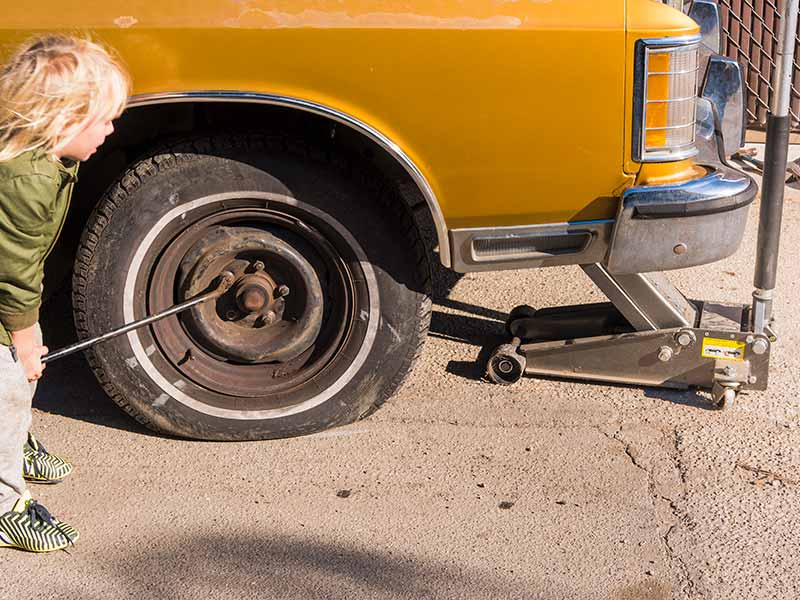Tire performance is dependent on having correctly inflated tires. Despite this, the signs of low tire pressure aren’t always obvious.
Low Tire Pressure Symptoms
- Poor Traction
- Longer Stopping Distance
- Vibration And Noise
- Bad Gas Mileage
- Uneven Tire Wear
- Bumpy Ride
- Pulling To One Side
- Hydroplaning
- Potential Flat Or Blowout
Your vehicle’s tire pressure monitoring system will alert you to a drop of 25% or more than the recommended tire pressure. You should have one of these systems in your car or truck if it were produced after 2008.
Older vehicles require you to check tire pressure with a tire pressure gauge manually. You can find the correct tire pressures listed on the tire information sticker in the driver’s door jamb or owner’s manual. It’s recommended you check it monthly whether you have TPMS or not.
Let’s take a closer look.
Effects Of Driving With Low Tire Pressure
Underinflated tires can have a very wide range of negative effects on the performance of your car or truck. The following is a comprehensive list of warning signs of low tire pressure to keep in mind.
Poor Traction
Your tires are designed to contact the road surface best when the tire’s air pressure is at the proper pressure for the weight of your vehicle. If you don’t have the correct air in your tires, the tread will not contact the road evenly, and you may notice reduced handling performance.
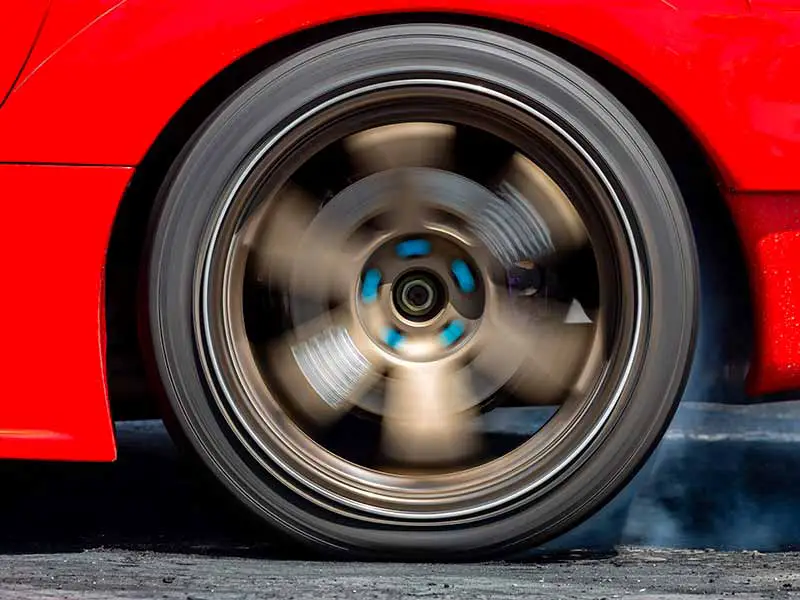
This likely won’t be noticeable during daily driving. Still, it can be a serious issue in an emergency where you need every last bit of traction your tires can offer.
Longer Stopping Distance
Poor grip also leads to emergency braking taking much longer. Again, day-to-day driving isn’t affected by low tire pressure, but it can be a significant safety problem in a panic situation.
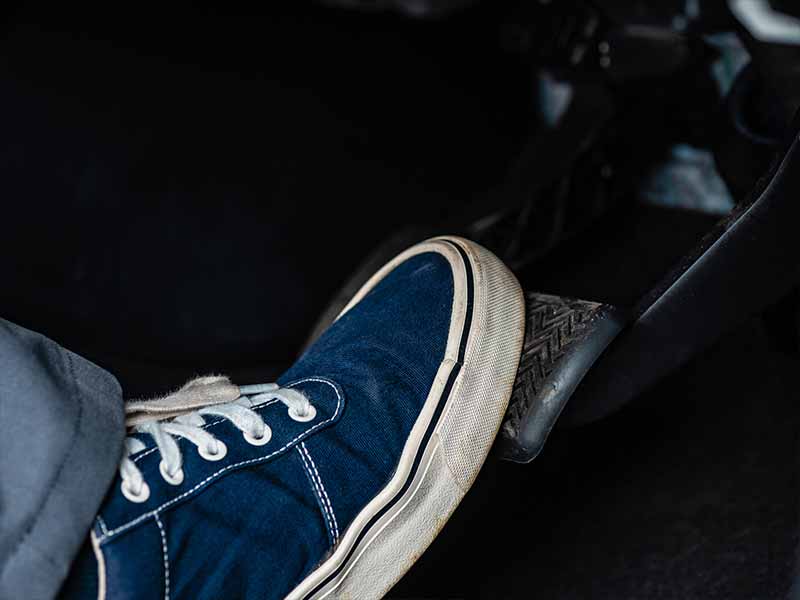
Your anti-lock braking system can only work up to the limit of the available grip of the tires. If they are not performing at their best, it will take much longer to come to a complete stop with underinflated tires.
Vibration And Noise
Significantly low tire pressure can lead to vibrations and a flapping noise. This is most common with a flat tire but is also common when your tire pressures are significantly lower than recommended.
Sidewalls flex and fold over when there isn’t enough air pressure for the tire to hold its proper shape. This deformation of the sidewall can cause quite a bit of unusual sounds and is a sign you should pull over immediately and check your tire pressure.
The sounds are often accompanied by vibrations in the steering wheel or seat. A very underinflated tire on the front of your vehicle will be more easily felt through the steering wheel. Vibrations from significantly low tire pressure in the rear are more easily felt through the seat.
Bad Gas Mileage
Fuel efficiency goes down when friction between the road and your car’s tires goes up. The less air pressure your tires have, the more friction against the road and the more fuel you’ll use to cover the same distance.
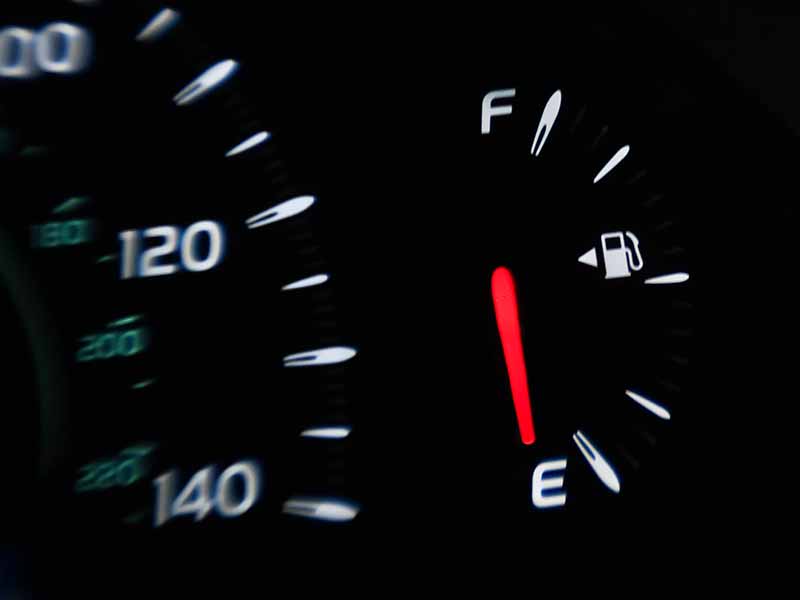
Low pressure causes fuel economy to drop because your motor has to overcome the additional force required to stretch the sidewalls. Properly inflated tires will not flex as much and roll much more effortlessly, which is more fuel efficient.
Uneven Tire Wear
As previously described, low tire pressure causes the sidewalls to flex outward and fold over if significantly low. This also causes the center of the tread pattern to have less contact with the road surface and the outer shoulders of the tire to carry most of the weight of your car or truck.
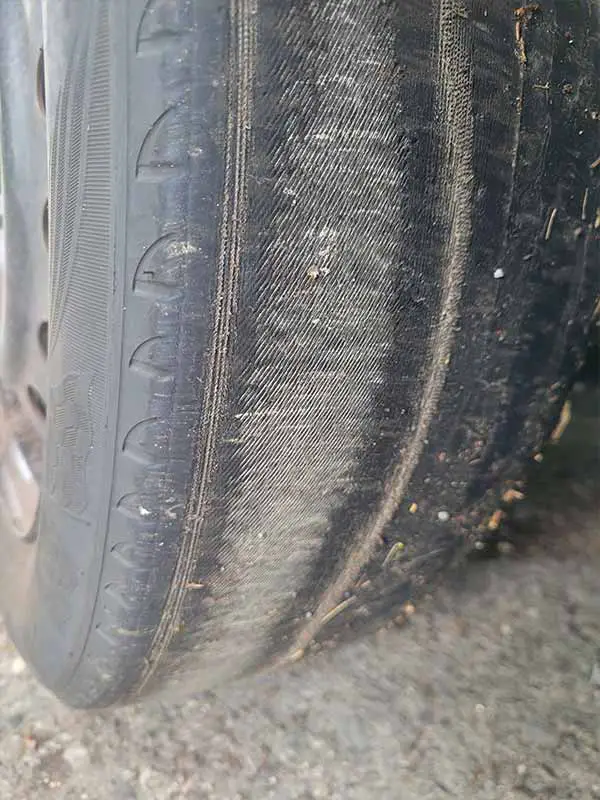
Without adequate tire pressure, your tires will wear quickly on the outer shoulders, which will cause them to have a significantly shorter lifespan.
Bumpy Ride
Many people don’t think of tires as a part of their vehicle’s suspension system, but it is a very accurate statement. Slightly decreased tire pressure can soften the ride, while slightly increased pressure can cause a bumpier ride.
If the air pressure in your tires is too low, the ride will be harsh and bumpy. If the air in your tires is just a little low, it can improve the ride quality slightly if your vehicle normally has a rough ride.
Pulling To One Side
Low tire pressure in one tire, especially one of your front tires, can easily cause handling to be unbalanced and pull to one side. The crown of the road, which tappers off at the edges, can cause a slight pulling and sometimes be confused for a problem with the vehicle’s tire pressure.
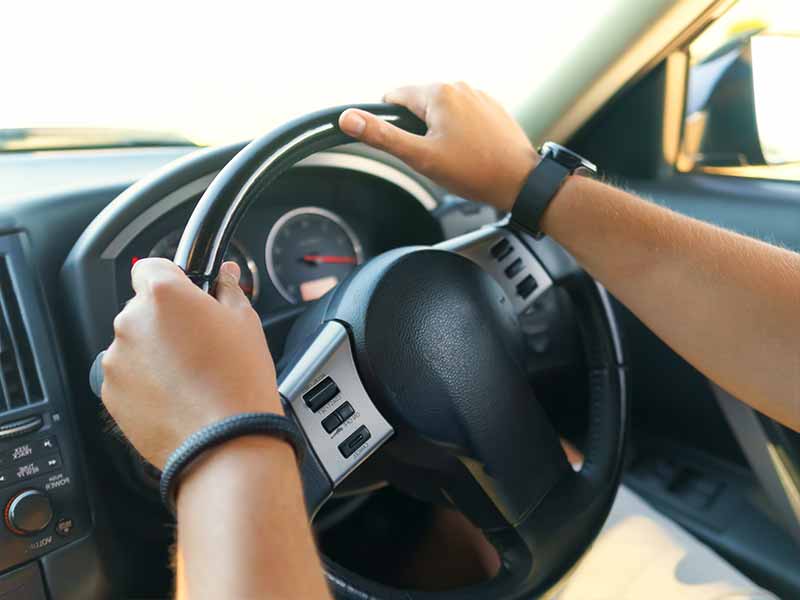
Pulling to one side is often an issue with the vehicle’s alignment, so be sure to check the alignment if you don’t find any problems with the air pressures.
Hydroplaning
Hydroplaning is when your tires can’t properly move water out from underneath them on wet roads, and you lose traction. Underinflated tires make hydroplaning much more likely since the tread pattern isn’t in proper contact with the road and can’t channel water from underneath the tires as effectively.
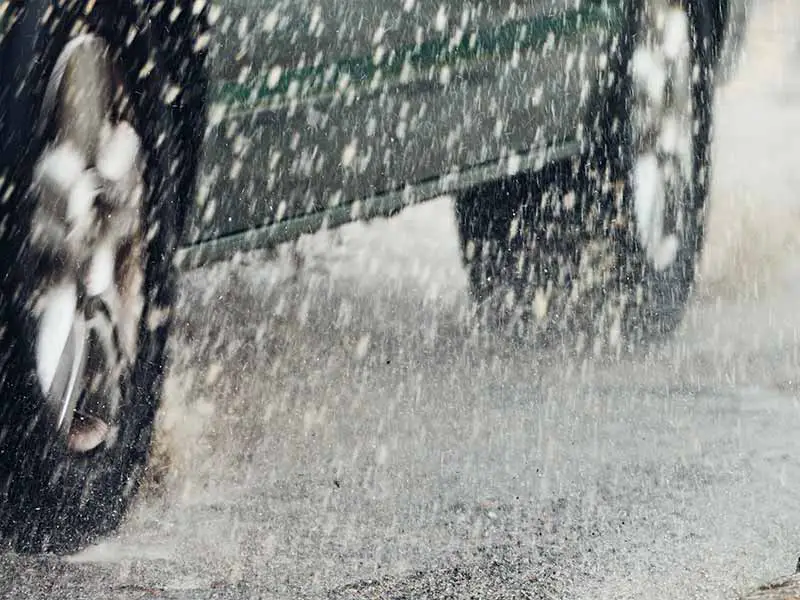
If you experience a sensation similar to sliding on ice on wet roads, you should check tire pressure and tread depth for all of your tires.
Potential Flat Or Blowout
One of the most dangerous situations low tire pressure can cause is a flat tire or blowout. This is where you go from a less-than-ideal situation of low pressure in a tire to no pressure. Flat tires often happen slowly, but an underinflated tire can quickly blow out when driven at high speeds or under extreme loads.
The sidewall flex that we mentioned causes heat to build up in your tires. It’s like bending a paper clip back and forth until it snaps. As you begin bending it, the spot of the bending will become hot. Eventually, it snaps.
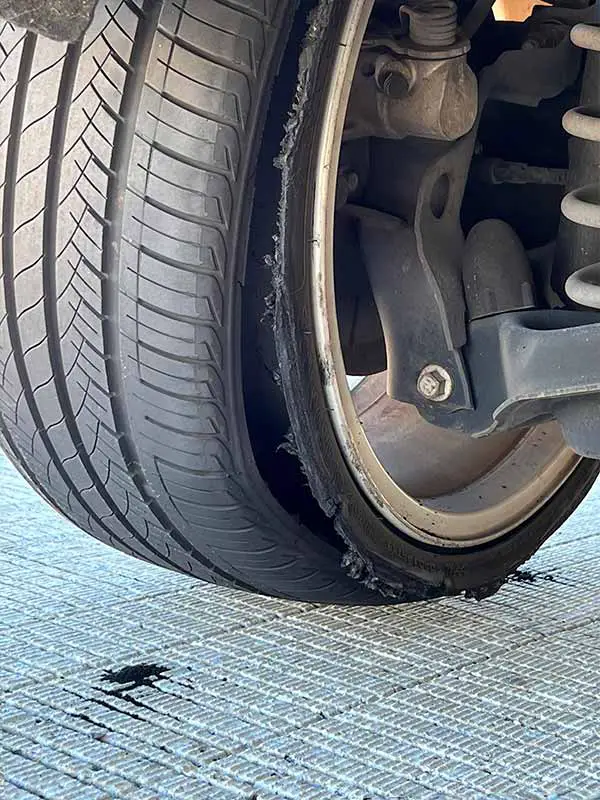
I’ve witnessed more than one accident on the highway due to this very situation. The sidewalls were pinched significantly, and we were traveling at highway speeds. The tire began smoking, and I backed off, knowing a tire blowout was about to happen.
Sure enough, the tire blew, and the driver lost control and hit a Jersey barrier which likely totaled the car. Fortunately, they didn’t appear to be hurt, and no one else was involved.
What Does Low Tire Pressure Feel Like?
Unfortunately, it’s not always easy to notice low tire pressure due to how it feels when driving. Over the years, tires have moved toward lower profile sidewalls which resist flexing more at lower tire pressure. Also, run-flat tires have stiff sidewalls that can support a car or truck for up to 50 miles at 50 miles per hour.
One of the reasons for the government mandating tire pressure monitoring systems is for these reasons. If your low tire pressure warning light is lit on your dashboard, you shouldn’t ignore it. Reduce speed and find a safe place to pull over to check the pressure in each tire.
What Does Low Tire Pressure Look Like?
Looking at a tire with low pressure often can’t give you a good indication of whether the air pressure is too low.
If the air pressure is very low, you will see the sidewalls bulging outward at the bottom where the tire comes into contact with the road. If this is your situation, your tires are VERY low, and you shouldn’t attempt driving on them.
Tires that are 25% or so below the recommended tire pressure likely won’t show any visual signs of low tire pressure. You should rely on your tire pressure monitoring system to alert you to significant drops in air pressure that can lead to uneven wear and even tire failure if not corrected for an extended period.
How Long Can You Drive With Low Tire Pressure?
It’s not recommended to drive unless your tires are at the proper pressures, but there are times when it may be necessary. The distance it’s acceptable to drive with low tire pressure depends on how much air is in your tires.
If your tires are low 30% or less, you can drive safely at lower speeds as long as needed. You should limit how far you drive, though, and add air to your tires as soon as possible.
As the pressure in your tires drops beyond this amount, it becomes more and more difficult to drive safely. A completely flat tire shouldn’t be driven on since it will quickly ruin the tire and possibly damage the wheel. Not to mention it’s much more difficult to control a car with zero air pressure.
What PSI Is Too Low To Drive?
Generally speaking, 20 pounds per square inch is considered the absolute minimum amount of air a tire needs to drive slowly and not damage the tire.

If you find yourself in this situation, you should slowly and carefully make your way to the nearest gas station, where they will hopefully have an air compressor you can use to top up the air in your tires.
Resources
Below are some links you may find helpful when learning about tires
- Listen up! How to diagnose 3 weird tire noises. – Firestone
- You should never let your tires get low – Car & Driver
Final Thoughts
Symptoms of low tire pressure are not as noticeable as they used to be due to lower-profile tires with stiffer sidewalls. This makes it difficult to notice the symptoms.
Symptoms range from uneven tire wear and unpredictable vehicle handling to lower fuel efficiency and even tire failure.
Check your tire’s air pressure monthly to ensure all four tires are at the recommended air pressures listed on the tire information sticker in your driver’s door jamb or owner’s manual.
Good luck and happy motoring.
